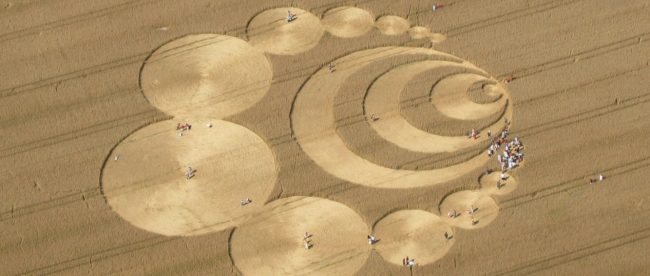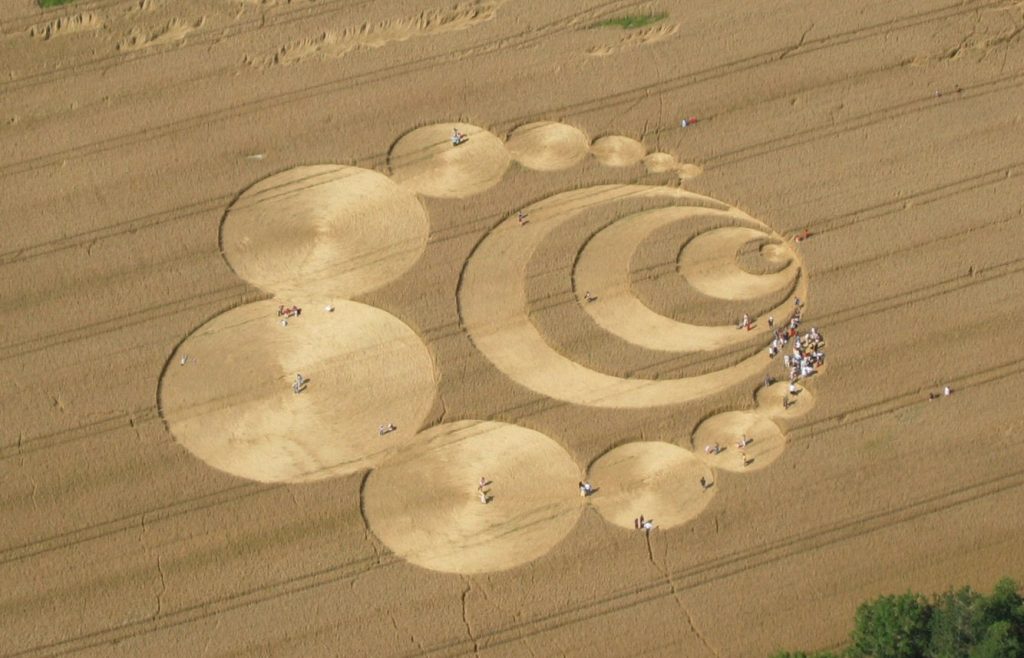The Incredible Cause of Tasmanian Crop Circles


If you were around in the 1980s, you probably have heard of crop circles. Like the ones seen above, crop circles are patterns in crop fields which are circular in shape when viewed from above. While they’re almost always created human endeavors or, in some rare cases, by odd natural phenomenon, many believe that some were created by alien life forms. In the 80s in particular, the apparent overnight emergence of crop circles would regularly spark rumors of UFOs.
But again, no, aliens aren’t behind stuff like the above. That said, there are some circles which, at least at first, defied explanation. Like the ones in Tasmania.
Tasmania is the roughly 25,000 square mile (68,000 km²) Australian island just off the southeast corner of the nation’s mainland. (Here’s a map.) It’s home to about 500,000 people and a lot of interesting wildlife, including the Tasmanian devil, which doesn’t look anything like the Looney Tunes character of the same name. And it’s also home to opium poppy farmers.
Opium poppies aren’t something which is grown in much of the world because doing so would be illegal — the poppies are used to make a class of drugs known as opioids. While opioids are sometimes legally prescribed for pain relief, they’re also often used illegally. Morphine, Oxycontin, Fentanyl, codeine, and heroin are all opioids — they’re all highly addictive and can easily be abused. Australia, according to the BBC, provides about 50% of the world’s legally-grown opium, and a lot of that comes from Tasmania.
For years, though, the story of the Tasmanian opium fields had little to do with the morality or legality of growing the raw materials for these addictive medications. Crop circles were appearing in the farmers’ fields, and it wasn’t clear what was going on. Unlike most crop circles, if this were a prank played by a group of people, it wasn’t harmless — the plowed or flattened areas once had opium growing on there, and now, the raw materials for a dangerous drug had gone missing. Therefore, human intervention seemed almost as unlikely as aliens. But farmers were at a loss for an explanation.
And then, in 2009, they figured it out: Wallabies.
Wallabies are, basically, mini kangaroos. They’re common in Tasmania and they, like other animals, need to eat. Food sources wax and wane as seasons change, so at times, they have to get creative. As the operations manager for one of Tasmania’s larger opium farming outfits explained, “often other forms of food are in short supply in late January/February and poppy capsules [become an option, as] half their weight is actually seed which is very nutritious. It’s a seed you see on bread rolls and in bread mixtures and things like that.” And if it’s good enough for people, it’s good enough for wallabies.
So, they ate the poppies. And had opium poppies just been like any other seed, we wouldn’t have a story — the wallabies would hop onto the fields, take a snack, and hop off. But being wallabies, they weren’t able to avoid the bad, addictive stuff. Lara Giddings, then the state’s attorney general, explained (via the Guardian): “We have a problem with wallabies entering poppy fields, getting as high as a kite and going around in circles. Then they crash. We see crop circles in the poppy industry from wallabies that are high.”
There isn’t much that a Tasmanian opium farmer can do about this, either, and at the end of the day, losing a bit of your crop to high wallabies isn’t a big deal. And given that there are no UFOs involved in the crop circles, the designs the wallabies leave behind, rest assured, are also nothing to worry about.
Bonus fact: While wallabies are indigenous to Austalia, that’s not the only place you’ll find them. There’s also a community living in the wild in France. In the 1970s, a group of wallabies escaped from a local zoo near Paris and were never found. They made a home in a local forest, doing what animals do, and now, four decades later, they number as many as 150. According to the Telegraph, the area now has at least one “Kangaroo Crossing” road sign, which many residents and visitors alike believe to be a prank. (It’s not.)
From the Archives: What’s Up, Doc?: How Bugs Bunny helped save the life of the Tasmanian Devil.
